On the heels of the FOMC rate decision, the news keeps coming as today after the close we see earnings releases from Apple, Google parent company Alphabet, and Amazon. As with every potential stock-moving event, the options market has priced the potential move on the news. Below, we’ll go over how the Expected Move can translate current levels of implied volatility into actionable information, and use these events to demonstrate various options spreads as examples.
Expected Moves Apple, Amazon, Alphabet
First, the Expected Move. The Expected Move is the amount that options traders believe a stock price will move up or down. It can serve as a quick way to see where real-money option traders are pricing the future movement of a stock. That consensus is derived from the price (or implied volatility) of at-the-money options.
An easy way to think about it is if the stock moves inside the expected move, options were overpriced, and if the stock moves outside the expected move, options were underpriced. When implied volatility increases, so does the expected move.
Knowing the expected move before making a trade can be incredibly powerful, regardless of whether you’re using stock or options to make your trade. It can also be used as a basis for starting strike selection, allowing a trader the ability to translate real-time implied volatility into potential option spreads. Options AI puts the expected move at the center of its options platform.
Below is an expected move comparison (via Options AI free tools) for the AAPL, GOOGL and AMZN
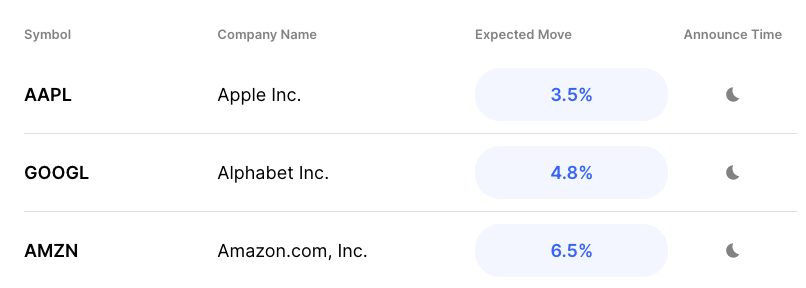
- Apple options are pricing about a 3.5% move
- Alphabet options are pricing about a 4.8% move
- Amazon options are pricing about a 6.5% move
Below we’ll show how the expected move can be used to assist in strike selection for multiple trade types using the names above. The directional and non-directional strategies can be used for any of these stocks or any other stocks and are shown here merely as examples.
Apple Stock or Call Alternatives
Typically, Implied volatility in options is relatively high into an earnings event and contracts after the release, with the uncertainty factor removed. Therefore there is a risk of buying outright options into the event should the stock not make a large move, as the contraction of implied volatility negatively affects the price of outright calls and puts. That factor can be partially mitigated by turning outright calls and puts into debit spreads.
For example, with Apple (AAPL) trading $149, buying an Apple (Feb 3rd) $149 Call costs around $3.20, or $320 in premium. In order for the Call to be profitable on Feb 3rd, the stock would need to be above $152.20.
Now, let’s take a scenario where a trader wants to position for a move higher but with a breakeven closer to where the stock is currently trading. One way to do that is to use the 3.5% expected move to guide strike selection, creating a defined risk option spread. One that lowers the breakeven when compared to an outright out-of-the-money or at-the-money Call and lessening exposure to option premium.
Using the Options AI platform, we’ll look below at some alternative strategies that have been generated with the expected move guiding strike selection. We can start by directly comparing the 149 call to a +149/-155 call spread.
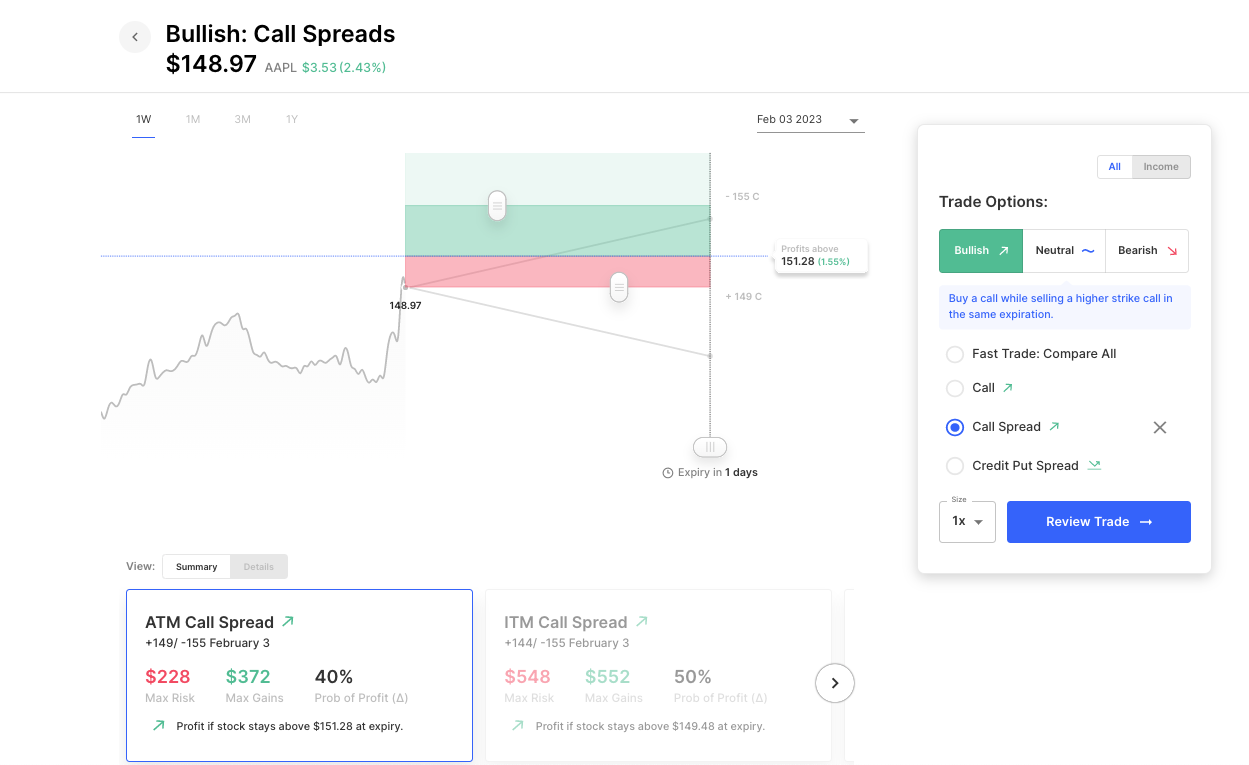
The 149/155 Debit Call Spread lowers the cost of the 149 call outright, from around $320 to $230 by simultaneously selling a call around the expected move level. In turn, this brings down the break-even level, by 90c. while increasing the probability of profit (by lowering the break-even level required at expiration) from around 34% to 40% The trader has also reduced their overall exposure to elevated volatility in the options versus an outright call. Less capital is at risk, and a lesser move higher is needed in order to at least breakeven.
Aside from the additional potential risks of option spreads (such as early assignment and liquidity), it is important to note that a spread caps potential profits (if the stock moves beyond $155).
Alphabet Credit (Bull) Put Spreads
Credit Spreads are another example of an options position that can not only reduce exposure to relatively high volatility but, can actually may benefit from it. Whereas Calls, Puts and Debit Spreads position for something to happen (a move in the stock), Credit Spreads can best be thought of as positioning against something happening. And as mentioned, when implied volatility is relatively high into an event, that’s because options are pricing that something, more than an average day.
Credit Spreads can be used to express a directional view (for example being bullish by selling a Credit Put Spread), or as non-directional income trades (for example selling a move or implied volatility).
This strategy typically risks more to make less, but instead of requiring the stock to move in the direction of the traders’ view, it is profitable if the stock simply doesn’t move against it. Therefore, the probability of profit can be higher.
Below are examples of bullish Credit Put Spreads in Amazon, one at-the-money, the other out-of-the-money. Both trades use the bearish expected move for initial setup, one as the Long Put to define risk, while selling an at-the-money Put. The other uses the bearish expected move to set its short strike, while buying a Put one strike below, to define risk
At The Money Credit (Bull) Put Spread:
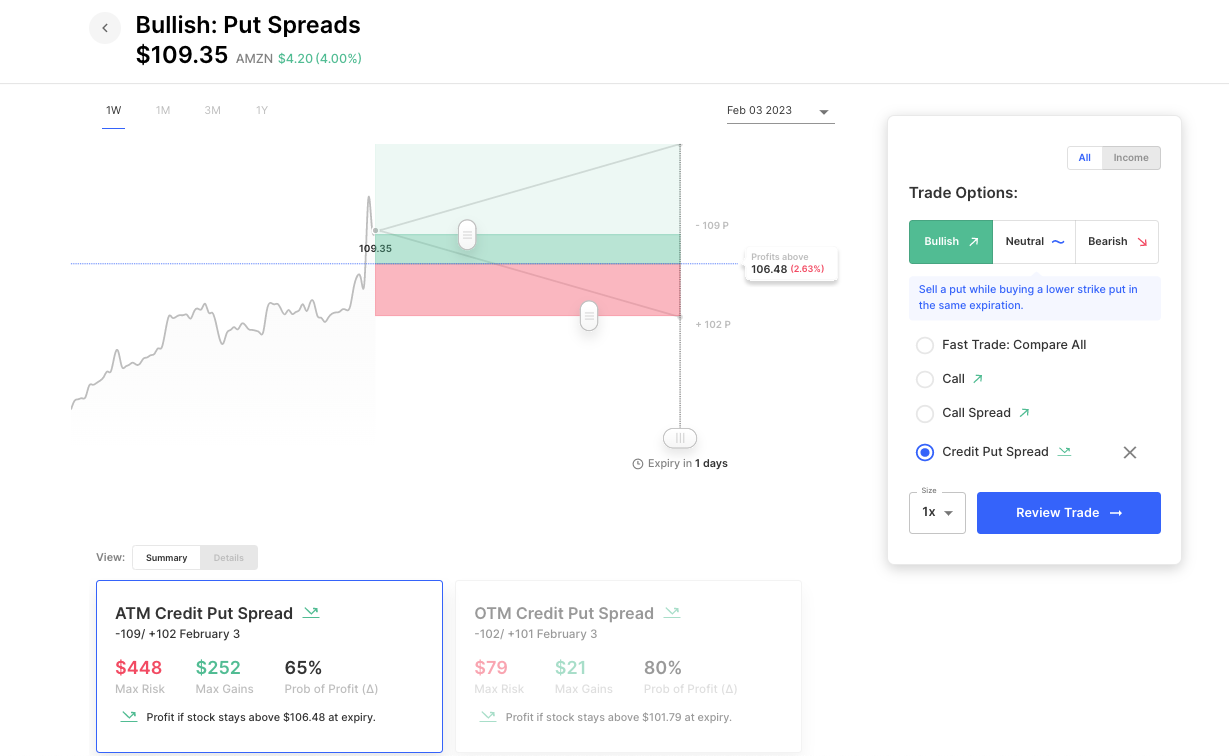
And the out-of-the-money Credit (Bull) Put Spread example:
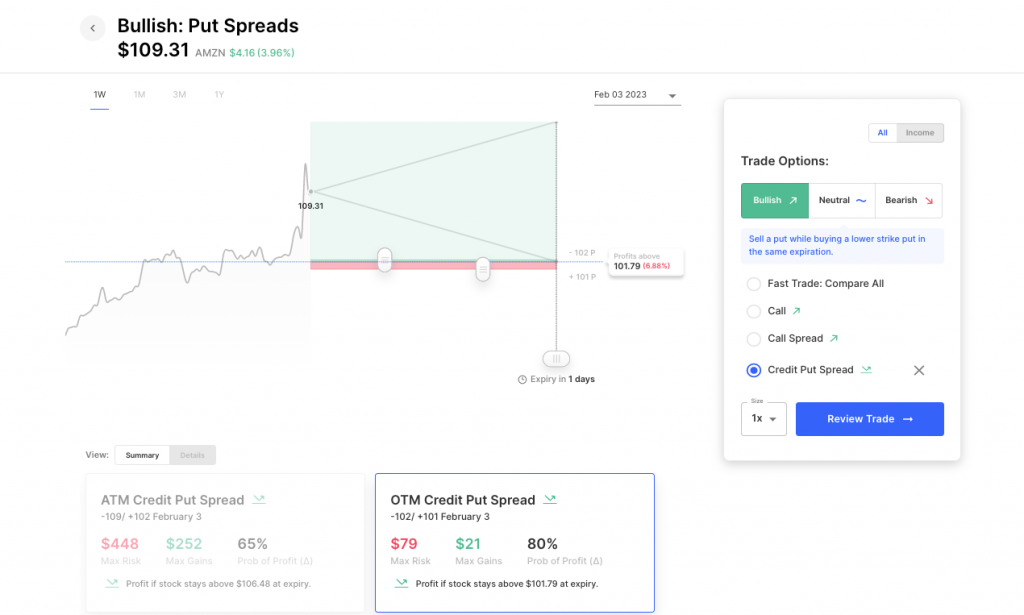
Of course, the same strategy can be used to express a bearish view, using Credit (Bear) Call Spreads. Those can also be used as potential income trades against a long stock position.
Alphabet Iron Condor – Potential Income Selling the Move
Out-of-the-money Credit Put and Call spreads can even be combined to form an Iron Condor, a credit spread that looks to make money if the stock stays within a range:
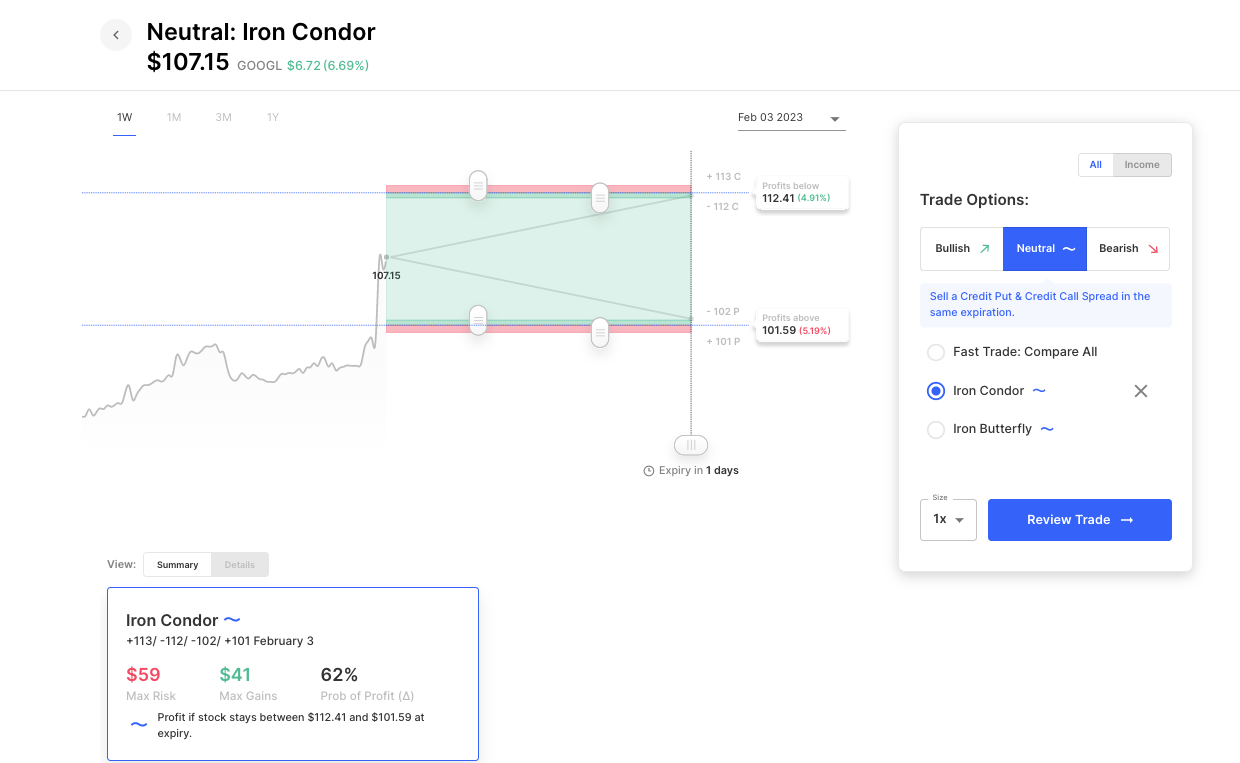
With GOOGL around $107 the trade above uses the bullish and bearish consensus (as based on real-time implied volatility) to generate a +101p/-102p/-112p/+113p Iron Condor. It sees maximum profit if GOOGL is anywhere between $101.50 and $112.50 on Feb 3rd expiration. It is a max loss above $113 or below $101, beyond the expected move options are pricing. A move beyond the expected move likely means that options were underpriced at their current implied volatility.
Options AI puts the expected move at the heart of its options platform. It allows traders to quickly generate and compare alternative ways to trade both Income and Directional strategies. Trades may then be customized by simply dragging and dropping strikes to set a profit zone.
Options AI, Inc. provides various tools at no cost, like an earnings calendar with expected moves, as well as the ability to generate spread strategies with its unique Free Options Tools. Visual trade customization and real-time data is available through its paid subscription service. Brokerage services are provided by Options AI Financial, LLC, member FINRA and SIPC.
All content is provided for informational and educational purposes only and is in no way intended as a recommendation of any particular security or trading strategy. All content is based upon publicly available information and pricing data at the time of writing. No warranty of any kind is made regarding the accuracy or usefulness of any content or data. Options involve risk, including exposing investors to potentially significant losses and are therefore not suitable for all investors.


